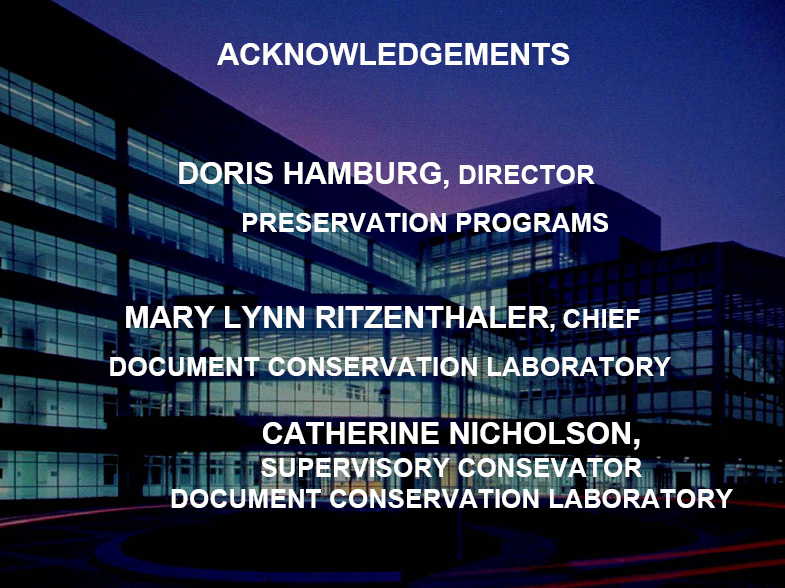
Comparison of Drying Methods
Being an informed consumer will help you make the best value of limited resources and ultimately yield the most satisfying results from a water-related incident. As a result of our experiences, we have learned how important it is to be as precise as possible at the outset of a project about expectations for a final product. Regardless of technique used, many of the issues raised will be helpful in the decision-making process so critical in determining the most appropriate action for a particular group of materials. While the information we accumulated in our review of drying processes has repeatedly proved fruitful, we wish to emphasize that there is no substitute for a building-wide risk assessment and preparedness plan.
The commercial drying industry continues to be responsive to the preservation community, tailoring, improving, and expanding their products and services. We are grateful for their steadfast cooperation in working to minimize loss to cultural property from water-related disasters.
We would like to express our appreciation to Doris Hamburg, Director, Preservation Programs and Mary Lynn Ritzenthaler, Chief, Document Conservation Laboratory for the mentoring and support as we embarked on the activities associated with this study. We are also indebted to the assistance and encouragement we received from Supervisory Conservator, Catherine Nicholson, and our colleagues in the Document Conservation Laboratory and in Research and Testing . Special thanks to National Archives Staff who donated testing materials and assisted with this project and emergency response colleagues who generously shared their slides.

